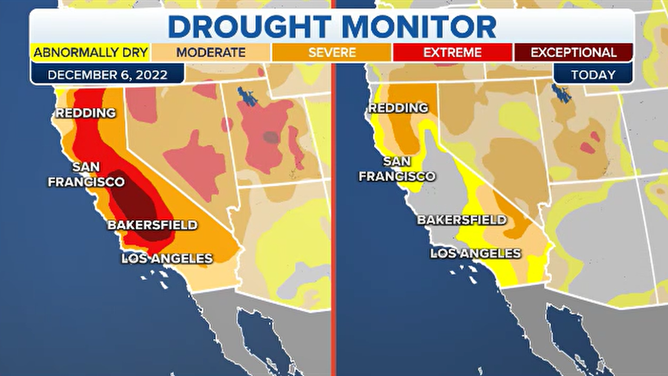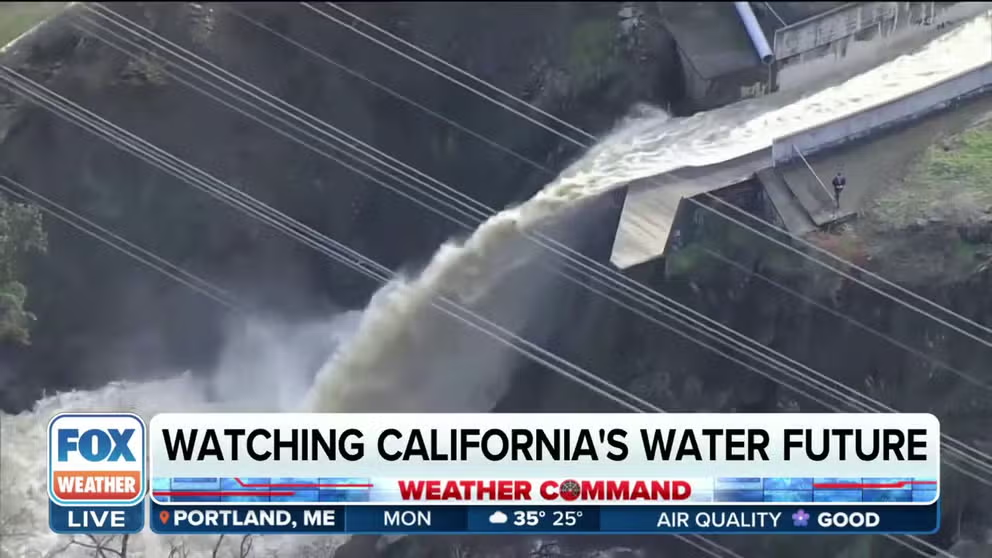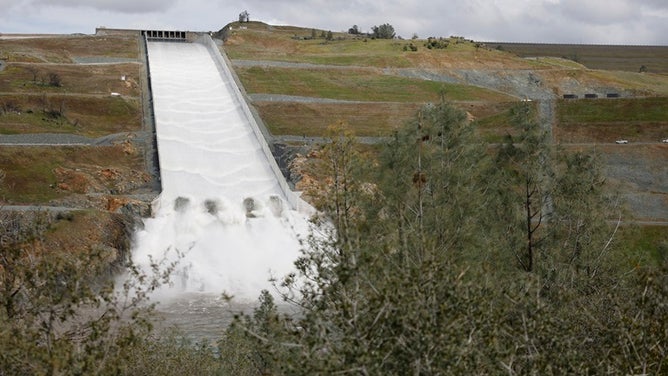What California's excessive snow, rain mean for state's reservoirs
There are estimated to be nearly 1,500 reservoirs in the Golden State, with more than a dozen considered to be major water resources for the state. Sixty-five percent of the more frequently monitored sites are above the historical average.
California's reservoir levels are up following recent atmospheric rivers
Kristin White, Bureau of Reclamation Central Valley Operations Manager, talks about California's reservoir levels going up following the recent atmospheric river storms.
SACRAMENTO, Calif. – A series of atmospheric river events with heavy rain and snow have caused California water regulators to open flood gates on water storage facilities, but the uncertainty of when Mother Nature’s faucet will shut off has experts weighing the advantages and disadvantages of letting the precious resource run free.
During average years, regulators say they work on keeping water levels high into the summer, but as mountains of heavy snow melt – literally – agencies are challenged with deciding how much water to store and what to allow to escape as part of flood control.
Some mountain passes are approaching record territory, with the UC Berkeley Central Sierra Snow Lab reporting 668" of fresh powder – a figure that is just shy of being the second-snowiest season on record - all while the state's snowpack sits at a stage greater than 200 percent of average.
Sean de Guzman, manager of the snow surveys and water supply forecasting unit at the California Department of Water Resources, said that the state overall is running just behind season records but with more storms expected, records could easily be broken.
"Right now, statewide, our snowpack is really close to that 1983 total. So, it’s one of the largest snowpack we’ve seen on record," de Guzman stated.
The Sierra Nevada, home to much of the snow, is known as the "frozen reservoir," providing some 30 percent of state’s water needs.
SNOW CONSIDERED CRUCIAL TO LONG-TERM DROUGHT MITIGATION

Lake Oroville, located some 75 miles north of Sacramento, is in the western foothills of the Sierra Nevada and is running some 117 percent of its historical average. Its high-water level forced authorities to release some of the precious resource for the first time in four years.
Compared to historical averages, water overages are not uniform in the state, which is home to nearly 1,500 reservoirs.
Trinity Lake, one of California’s largest reservoirs, was last reported to be at less than half the historical average.
"The picture isn’t as pretty in that northern Sierra and southern Cascades. Right now, it is still above average, but it’s nowhere near those record-breaking levels that we are seeing in the southern Sierra. It’s especially needed in those areas where we have the largest reservoirs here in the state," said de Guzman.
THIRSTY CALIFORNIA RESERVOIRS BENEFIT FROM ATMOSPHERIC RIVER STORMS, BUT DROUGHT IS FAR FROM OVER

Recent analysis shows the southern region of the mountain chain has almost two years' worth of snow waiting to melt, with potentially more frozen precipitation to come.
Experts say snow generally peaks in April and starts to melt shortly after, which could lead to additional flooding.
Jeremy Arrich, manager of the division of flood management for California’s Department of Water Resources, said he expects flood concerns to continue into the spring melting season.
Even with the atmospheric river events, there is still a long way to go before the entire state exits the long-term drought and replenishes its groundwater supplies.
"Our groundwater basins are a lot slower to recover. It takes more than a single, wet year to really recover a lot of those groundwater basins that have been critically over-drafted for so many years during this drought," de Guzman stated.
Water regulators said in April agencies will review and provide recommendations on the state’s drought response, which could allow for changes and the expiration of water restrictions that are no longer needed. Experts say they’ll also get better clarity of the state’s hydrologic conditions as the calendar nears May and the higher elevation melting seasons gets underway.

West Coast Drought Monitor
(FOX Weather)



